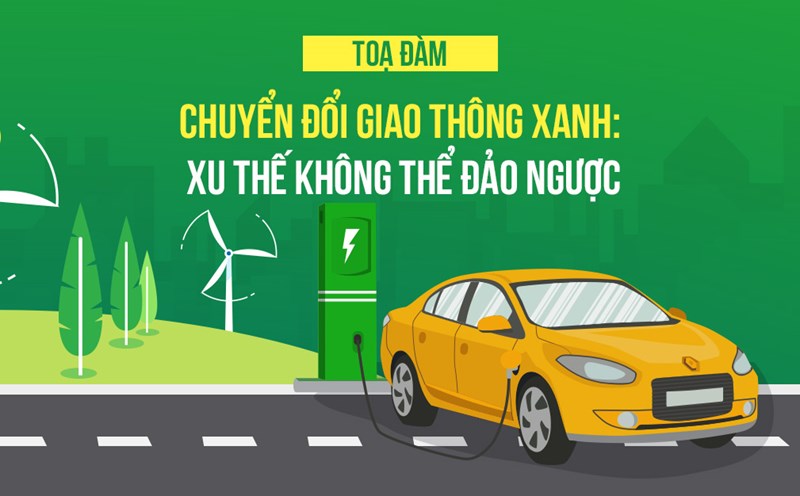On July 16, the Hanoi People's Committee held a meeting to review the progress of green transport conversion in the area. Vice Chairman of Hanoi People's Committee Nguyen Manh Quyen chaired.
According to Deputy Director of the Hanoi Department of Construction Dao Viet Long, the conversion to green public transport has had very encouraging results. Currently, Hanoi has 47.4% of taxis are electric vehicles and 46.5% of contract vehicles with less than 9 seats are electric vehicles.
23 taxi companies have committed to converting 100% to electric vehicles by the end of 2030.
However, on this transformation roadmap, the city is also facing many challenges.
First, the charging station infrastructure is still limited. There are currently no general standards on charging stations and charging sockets, making it difficult to use shared charging stations between car manufacturers.
Along with that, there is no overall plan for the power grid and charging station infrastructure, especially in the inner city area. Socializing investment in charging infrastructure also faces difficulties due to the lack of a specific legal framework on management and service prices.
Second, the initial investment cost for green vehicles and infrastructure is still very high. For electric buses, to ensure the same operating frequency as diesel vehicles, the city needs to invest in about 40-50% of vehicles. Meanwhile, there is still no attractive financial mechanism such as credit incentives or tax exemptions to encourage businesses to boldly convert.
In addition, the fear of durability and range of electric vehicles still exists. Inter-sectoral coordination to remove difficulties in land, construction licensing or technical infrastructure for charging stations is not really effective...
Suggesting solutions to promote green transportation transformation, Deputy General Director of Hanoi Power Corporation Nguyen Anh Dung said that currently, there are few charging stations that have not affected the power source. However, in the 2026-2030 period, there is a great demand, so it is necessary to clarify how many charging stations are needed each year for each type of capacity.
The city should assign a department as the presiding unit with the participation of relevant units. Strive to issue a charging station plan in 2025, from which the Electricity industry will calculate power sources to meet demand. Along with that, businesses should study battery leasing options, diversify the needs of serving people and businesses.
Regarding the location of the charging station, the representative of the Department of Industry and Trade proposed that the City People's Committee assign the Department as a unit to coordinate with 126 communes, wards and related units to review and determine the location, area and origin of the land. From there, the plan will be updated and submitted to the city as a basis for implementation.
Regarding this issue, Vice Chairman of Hanoi People's Committee Nguyen Manh Quyen emphasized that investment projects in urban areas when approving planning should pay attention to the arrangement of charging stations. The development of charging stations must ensure consistency throughout the area.
The city recommends that businesses that need to deploy charging stations must coordinate with the Department of Construction to update qualified stations and eliminate unqualified stations. Thereby, the charging station planning will be completed soon; encourage businesses to join hands to pilot according to the city's general plan.










